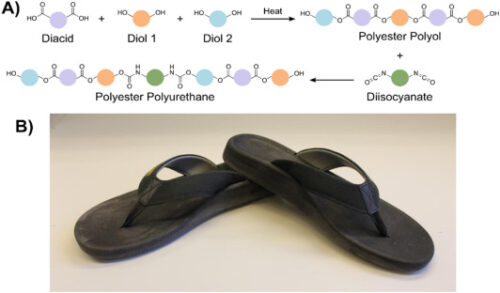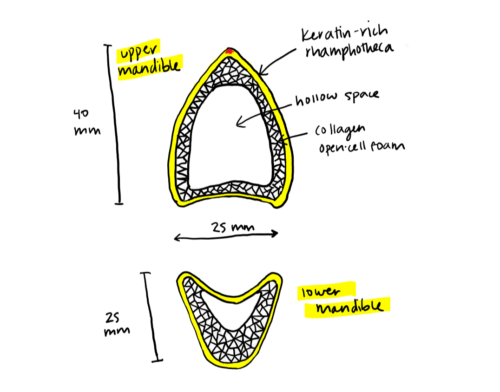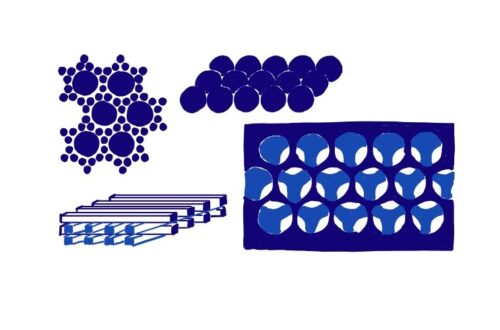Wikipedia assignments come in all shapes and sizes, but some of the most interesting are from classes that have found an open lane and return to it year after year. Directing your students to the same topic area term after term allows them to build upon the work of your previous classes. That can have a profound impact on the knowledge available on Wikipedia, especially when it’s a fairly poorly-developed subject area.
In Spring 2022, students in Edmund Palermo’s Biology in Materials Science class returned to the subject area for the fourth time, building on contributions by prior classes in 2017, 2018, and 2020.

Biofoams are a broad class of biologically-derived foams that now have a Wikipedia article, thanks to these students. Biofoams can include natural compounds like antlers, horseshoe crab shells and toucan beaks, but can also include synthetic compounds that serve as alternatives to petroleum-based products in areas like packaging or flip-flops. The article created by Professor Palermo’s students serves as an overview of many individual materials that previous incarnates of the class created or expanded Wikipedia articles for.
And speaking of new articles, one group of students created one on the toco toucan beak. While the beak of a single species of bird might seem like too narrow topic for its own page, the amount of research about it is enough to meet Wikipedia’s notability status. The inclusion of extensive information on the beak from the a biomaterials perspective, and its role as in biomimetic design — where it serves as a model for manmade systems — makes this article more than just one about a bird’s body part.

Fungal mycelium, the basic body tissue of most fungi, is the basis of a wide range of environmentally-friendly materials that can be used as alternatives in packaging, building materials, acoustic dampening, and in the fashion industry. By creating an article on mycelium-based materials, students in the class were able to tie together information that would otherwise be covered in a more disjointed fashion across articles about specific products or specific companies using them.
In addition to these three new articles, students in the class expanded a range of other articles. The amylopectin article, for example, was short and barely touched on its importance as a key component of starch foods like rice, potatoes and corn. The previous version also gave little useful information about the compound’s structure, history, or its important roles in diet, textiles, drug delivery systems, or tissue engineering. By adding all this and more, students in the class were able to transform the article into something much more useful to readers, while also integrating it into the wider bodies of information on Wikipedia. Connecting concepts on Wikipedia make them more discoverable, both to readers clicking links and search engines looking at information networks. The act of making these connections also inspires students to think across topics and disciplines.

Other students in the class expanded the bio-inspired photonics, nano-scaffold, and abductin articles. The last of these is especially intriguing because it’s the elastic protein that forms the hinge that connects the upper and lower halves of a bivalve mollusk’s shell together. The students were able to expand the article from four-sentences into something substantial and useful to readers.
Wikipedia’s coverage of a lot of areas is uneven. For subjects like biomaterials, which have the potential to play such an important role in the future of Earth as a livable planet capable of sustaining human life, filling those gaps is important. Maybe one of these Wikipedia articles — or one on a totally different topic one of your students creates — will help guide someone into a field where they go on to make an important discovery. We can all dream about making a difference, but by improving Wikipedia, you and your students actually are.
To incorporate an assignment like this into your next course, visit teach.wikiedu.org for our free assignment templates, dashboard, and support.
